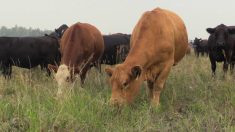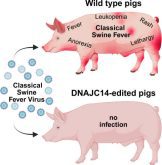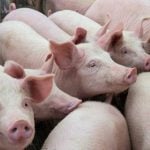The cost of a Big Mac in the United States could rise in the new year because of a shortage of hamburger beef.
A recent U.S. industry report said a sharp decline in the number of Canadian cattle imports could aggravate an already-short supply of grinding beef used to make hamburger patties.
According to the CME Group’sDaily Livestock Report,imports of Canadian slaughter cows during a six-week period ending in late November 2010 were down 24 per cent from the same period in 2009.
Read Also

Linebreeding horses drives genetic bottlenecks
Too much linebreeding and prioritizing pedigree can narrow genetic diversity and lead to horse health problems in future generations.
Light shipments from Australia and New Zealand, which export mostly industrial beef for grinding, will add to the shortage, the report said.
“If current trends continue, imported beef will continue to be very tight in (the first quarter) of 2011 and slaughter cow supplies, both U.S. and Canadian, likely will be more limited,” it said.
The report also noted imports of Canadian feeder cattle between Oct. 11 and Nov. 20, 2010 were 46 per cent lower than for the same period in 2009 and 82 per cent lower than in 2008.
It attributed the decline to a strong Canadian dollar, shrinking livestock supplies and U.S. country-of-origin labelling.
Kevin Grier, a livestock analyst with the George Morris Centre, agreed but said a feed grain price advantage in Western Canada was an even bigger factor.
Prairie barley prices right now are lower than U.S. corn prices, so cattle tend to stay here, Grier said.
“If we lose our grain price advantage, they’ll go south at the drop of a hat.”
According to Canfax Research Services, barley prices since August were 21 per cent below corn prices in barley equivalents.
Grier said the drop in feeder exports to the U.S. will have little impact on grinding beef supplies, since feeders are fed to slaughter for higher-end cuts.
Scott McKinnon, a Canfax analyst, agreed slaughter cow exports to the U.S. are lower because of a greater demand here.
But McKinnon said the cow kill in Western Canada is also down because of smaller herd numbers. As of early December, the combined cow and bull slaughter for the year was down nine per cent.
“Supply is tight. We just have fewer cows out there.” McKinnon said there’s a global shortage of lean
trim and grinding beef. Imports from three major suppliers – Australia, New Zealand and Uruguay – are all down.
In the case of Australia, replenishing rains after a prolonged drought are causing cattle producers to retain breeding animals, leaving less to export, said McKinnon. [email protected]
———
“Supplyistight.”
– Scott McKinnon, Canfax














